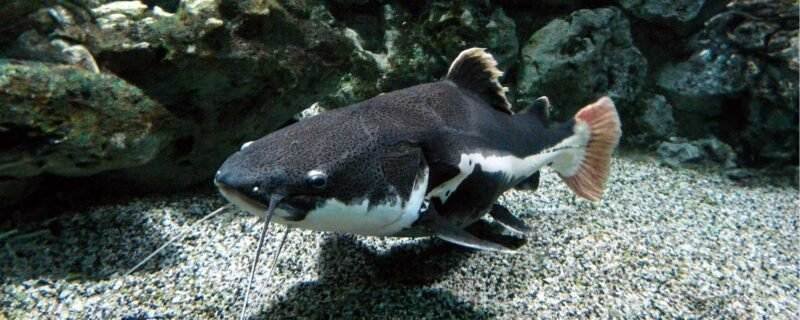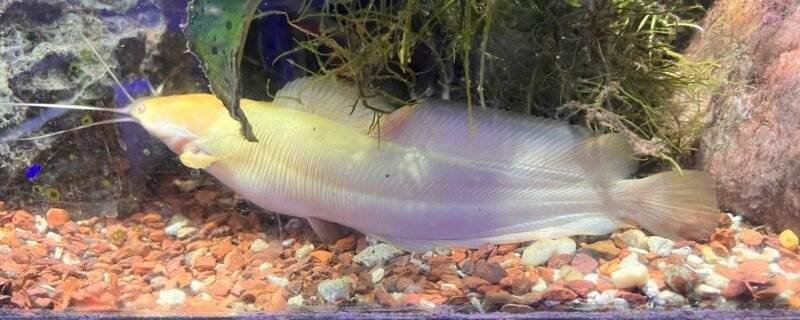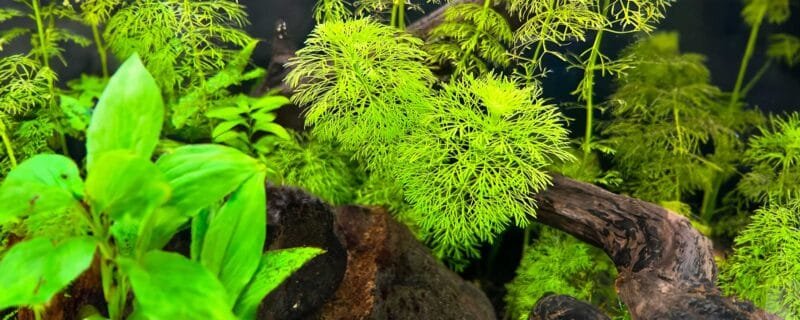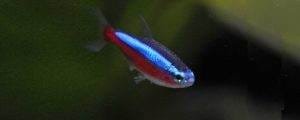The Giraffe Catfish (Auchenoglanis occidentalis), also known as the Giraffe-nosed Catfish, is an impressive freshwater fish native to Africa. Known for its distinctive giraffe-like pattern of blotches and spots, this species is a favorite among aquarists looking for something large, peaceful, and visually striking. Despite its size, the Giraffe Catfish is a gentle bottom-dweller and can coexist peacefully with similarly sized tankmates.
This species belongs to the family Claroteidae and is one of the largest African catfish commonly kept in aquariums. Its striking pattern, active scavenging behavior, and manageable temperament make it a rewarding—though challenging—fish to keep.
Native Habitat
The Giraffe Catfish is native to Africa, found widely across the Nile, Niger, and Chad River basins, as well as in various freshwater lakes and streams throughout the continent. These fish typically inhabit slow-moving or standing waters with muddy or sandy bottoms, where they sift through substrate for food. Their natural environment is often murky, warm, and rich in organic matter.
In the wild, they experience both seasonal floods and dry periods, adapting easily to variable water conditions—a resilience that makes them hardy in captivity.
Size and Lifespan
Giraffe Catfish can grow impressively large.
-
Average Size: 18–24 inches (45–60 cm) in captivity
-
Maximum Size: Up to 35 inches (90 cm) in the wild
-
Lifespan: Typically 18–25 years with excellent care
Because of their size, Giraffe Catfish require a very large aquarium or indoor pond—ideally at least 200 gallons (750 liters) or more for an adult specimen.
Appearance
As their name suggests, Giraffe Catfish display a pattern of brown patches and lighter blotches reminiscent of a giraffe’s coat. The base color is usually beige or yellowish-brown, with dark, irregular spots. As they age, the pattern tends to fade, particularly on the head and body, though the tail often retains some markings.
Their bodies are elongated and slightly flattened with a broad head, downward-facing mouth, and two pairs of barbels—features typical of benthic (bottom-dwelling) catfish.
Diet
In the wild, Giraffe Catfish are omnivorous scavengers, feeding on:
-
Insects
-
Crustaceans
-
Worms
-
Algae
-
Detritus and plant matter
In captivity, they will happily eat a wide variety of foods. A balanced diet can include:
-
Sinking pellets or wafers for catfish
-
Frozen or live foods like bloodworms, earthworms, shrimp, and krill
-
Vegetable matter such as blanched spinach, zucchini, or peas
-
Occasional high-protein treats for variety
Feed them once or twice daily, ensuring food reaches the bottom where they feed. Avoid overfeeding, as they are voracious eaters that can contribute to tank waste quickly.
Water Conditions
Giraffe Catfish are relatively adaptable but thrive best in warm, clean, and well-oxygenated water.
Ideal Parameters:
-
Temperature: 74–82°F (23–28°C)
-
pH: 6.5–7.5
-
Hardness: 5–20 dGH
-
Tank Size: Minimum 200 gallons (for adults)
-
Substrate: Fine sand or smooth gravel
They appreciate dim lighting and plenty of space to roam. Driftwood, smooth rocks, and hiding areas can help mimic their natural environment. Strong filtration is essential due to their size and the amount of waste they produce.
Ease of Care
Moderate to Difficult.
While Giraffe Catfish are hardy and tolerant of varying conditions, their massive size and long lifespan mean they are not suitable for beginners. They require significant tank space, heavy filtration, and regular maintenance. However, for experienced aquarists, they are a peaceful and rewarding species to keep.
Temperament and Tankmates
Giraffe Catfish are peaceful bottom dwellers that generally ignore tankmates they cannot fit into their mouths. They are not territorial and rarely show aggression, except perhaps mild competition during feeding.
Good Tankmates Include:
-
Larger African cichlids (e.g., Synodontis species, Haplochromis)
-
Large barbs (like Tinfoil Barbs)
-
Silver Dollars
-
Plecostomus and other big catfish species
-
Bichirs or ropefish
Avoid small fish or shrimp, as they may be eaten.
Sexing
Sexing Giraffe Catfish is challenging because males and females look very similar.
However:
-
Males may be slightly slimmer and more streamlined.
-
Females tend to be rounder, especially when gravid.
Because of their size and subtle sexual dimorphism, accurate sexing is often only possible during spawning behavior.
Breeding
Breeding Giraffe Catfish in captivity is extremely rare.
In the wild, they migrate during the rainy season to shallow, muddy floodplains for spawning. The female lays eggs in burrows or depressions in the substrate, which the male guards until hatching.
In aquariums, replicating these seasonal conditions—temperature changes, heavy rainfall simulation, and spacious substrate—is difficult. No documented cases of successful home breeding are known, and most Giraffe Catfish in the aquarium trade are wild-caught juveniles.
Behavior and Activity
Giraffe Catfish are active scavengers, constantly exploring the tank bottom in search of food. They are most active during dusk and nighttime but can adapt to daytime feeding schedules. Their peaceful nature and curious personality make them interesting to watch, though they can uproot plants or move decorations while foraging.
Species Variations
The genus Auchenoglanis includes several related species with similar appearance and behavior, such as:
-
Auchenoglanis biscutatus
-
Auchenoglanis occidentalis occidentalis (the typical variant)
-
Auchenoglanis tanganicanus
The pattern, size, and fin shapes vary slightly among these subspecies and geographical variants, but all share the characteristic giraffe-like markings.
Albino Giraffe Catfish
The Albino Giraffe Catfish is a rare and stunning variation characterized by its creamy-white or pale pink body and red eyes. The giraffe-like markings are faint or absent, and the fish’s body takes on a ghostly elegance.
Care for albino specimens is identical to that of the standard form, though they may be more sensitive to intense lighting. Dimmer tanks help reduce stress and showcase their color better. Albino Giraffe Catfish are highly sought after by collectors and can command higher prices due to their rarity.
Common Health Issues
Like other large catfish, Giraffe Catfish can suffer from:
-
Bacterial or fungal infections due to poor water quality
-
Parasites such as ich, especially when stressed
-
Barbel damage from sharp substrate or rough tank decor
-
Digestive issues from overfeeding or indigestible foods
Maintaining clean water, avoiding sharp decorations, and feeding a varied diet will minimize these risks.
FAQs About the Giraffe Catfish
1. How big do Giraffe Catfish get in home aquariums?
In captivity, they typically reach 18–24 inches (45–60 cm), though some may exceed 30 inches in very large tanks or ponds.
2. Can Giraffe Catfish live with cichlids?
Yes, they can live peacefully with larger, non-aggressive cichlids such as Haplochromis or Peacock Cichlids, provided the tank is large enough for all species to coexist comfortably.
3. Are Giraffe Catfish suitable for planted tanks?
They can be kept with sturdy, well-rooted plants, but their foraging behavior often uproots or disturbs soft plants. Consider using hardy species like Anubias or Java Fern attached to rocks or driftwood.
Conclusion
The Giraffe Catfish (Auchenoglanis occidentalis) is a majestic freshwater species admired for its beauty, calm temperament, and impressive size. While not suited for small aquariums, those able to provide a large, well-maintained environment will find them both captivating and surprisingly gentle giants of the aquarium world. Their unique patterns and curious nature make them an unforgettable centerpiece in any large freshwater setup.







